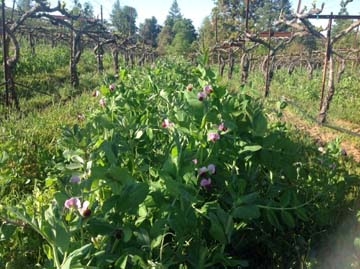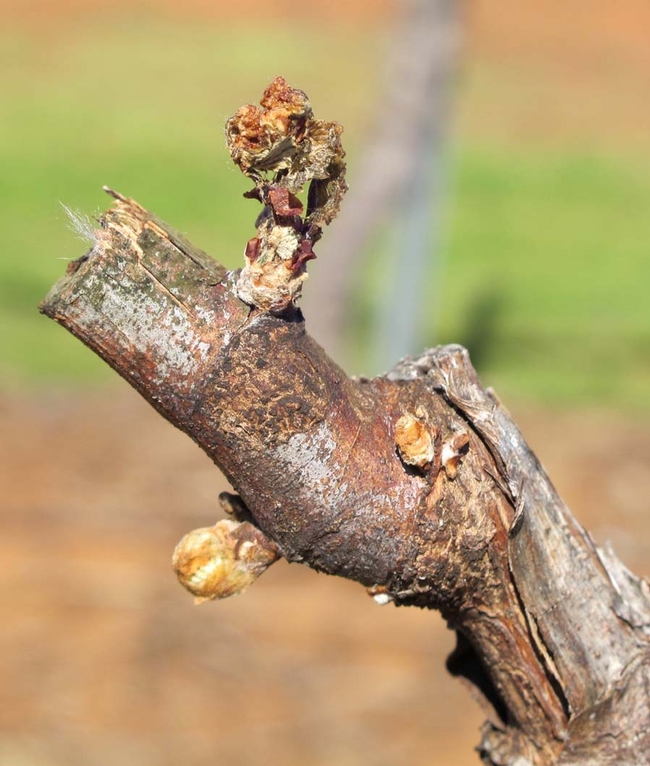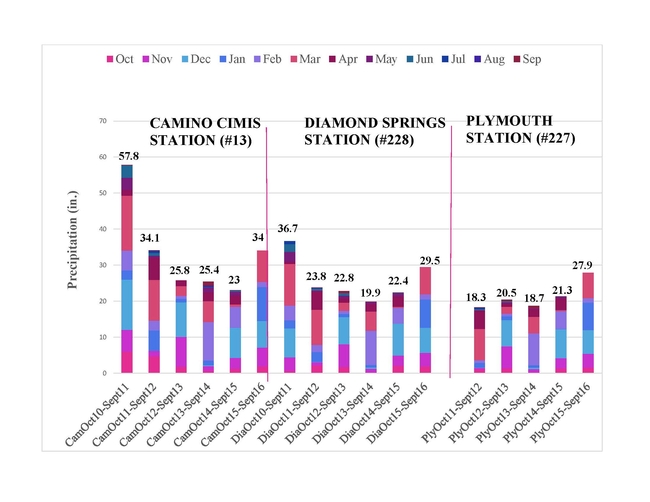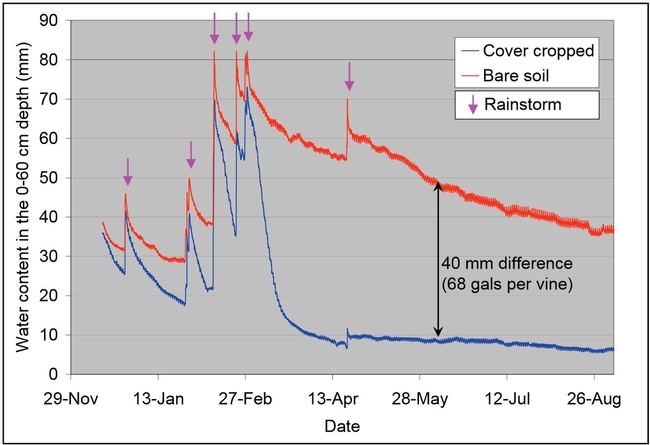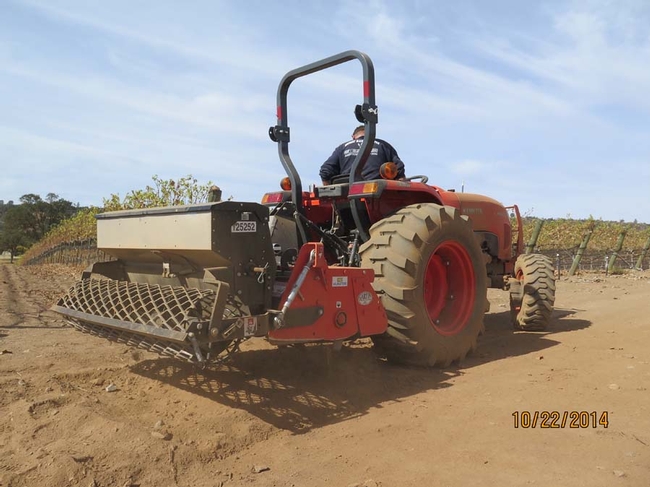This beautiful cover crop of legumes can provide nitrogen if it's tilled in while it's blooming.
The most important thing to consider NOW about your cover crop is managing it in a timely manner-either by disking it in or mowing it down (made difficult with wet soils, I know)-as soon as possible.
Why the rush? You might ask. When budbreak occurs in our trees and vines, it signals the time when our crops become Frost damage is a realtively common occurance in foothill trees and vines, made worse by cover crops that harbor ice nucleating bacteria and reduce soil surface temps.
CIMIS station precipitation totals for the hydro year since 2010 ( annually Oct. 1-Sept. 30); updated March 20, 2016
Water content in soil with and without a cover crop. Courtesy of Mark Battany, UCCE San Luis Obispo/Santa Barbera Counties.
The solution? Disk in or mow down that cover once you have budbreak in your crop...which has already occurred in our tree crops and is happening right about now in many grape varieties. If you've planned for what you want out of your The Muratori rotary tiller is a favorite to disk in a cover crop at Hurst Ranch. Doesn't work so well in rocky soil though!
If you've chosen a grassy cover crop then you will likely be mowing it down as soon as the soil dries down enough to get in and do tractor work.
See my website handouts from my cover crop meeting for more information on choosing and managing a cover crop.
